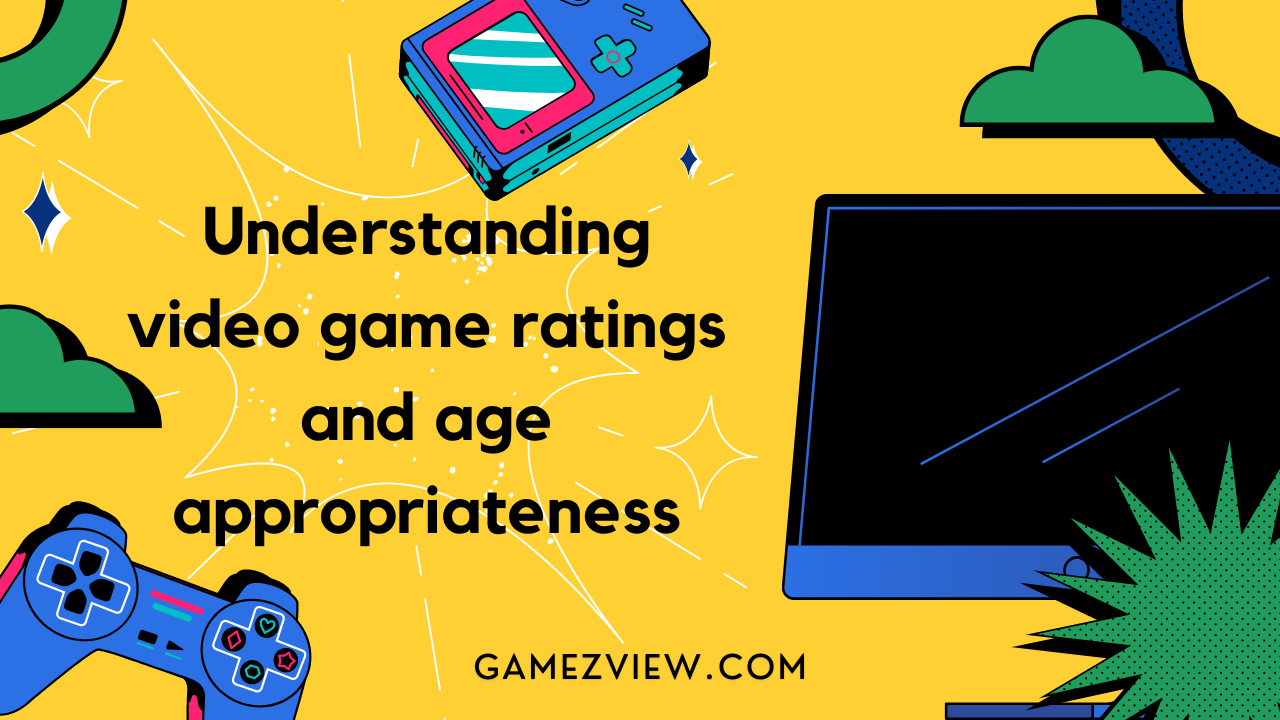As video games continue to evolve and diversify, players and parents need to understand the ratings and age appropriateness of games. Video game ratings guide the content and suitability of games for different age groups, helping players make informed decisions and ensuring that games align with their preferences and values. In this guide, we’ll explore the various video game rating systems and how they determine age appropriateness.
Meta Description:
Discover how video game ratings help players and parents make informed decisions about age-appropriate gaming experiences and understand the different rating systems used worldwide.
ESRB Rating System (North America)
Early Childhood (EC)
Games rated EC are suitable for young children and contain content that is educational and non-threatening.
Everyone (E)
Games rated E are suitable for all ages and may contain minimal cartoon, fantasy, or mild violence.
Everyone 10+ (E10+)
Games rated E10+ are suitable for players aged 10 and older and may contain more cartoon, fantasy, or mild violence, mild language, and/or minimal suggestive themes.
Teen (T)
Games rated T are suitable for players aged 13 and older and may contain violence, suggestive themes, crude humour, minimal blood, simulated gambling, and/or infrequent use of strong language.
Mature (M)
Games rated M are suitable for players aged 17 and older and may contain intense violence, blood and gore, sexual content, and/or strong language.
Adults Only (AO)
Games rated AO are suitable only for adults aged 18 and older and may contain prolonged scenes of intense violence, graphic sexual content, and/or gambling with real currency.
PEGI Rating System (Europe)
PEGI 3
Games rated PEGI 3 are suitable for all ages and do not contain any material that parents would find inappropriate.
PEGI 7
Games rated PEGI 7 are suitable for players aged 7 and older and may contain mild violence or frightening scenes.
PEGI 12
Games rated PEGI 12 are suitable for players aged 12 and older and may contain violence of a slightly more graphic nature, mild swearing, and/or suggestive themes.
PEGI 16
Games rated PEGI 16 are suitable for players aged 16 and older and may contain realistic-looking violence, strong language, and/or gambling.
PEGI 18
Games rated PEGI 18 are suitable only for adults aged 18 and older and may contain graphic violence, including depictions of torture, sexual violence, and/or the use of drugs.
Age Classification and Content Descriptors
Content Descriptors
Both ESRB and PEGI use content descriptors to provide additional information about the content of a game, including violence, language, sexual content, and gambling.
Age Classification
The age classifications provided by ESRB and PEGI serve as a guideline for parents and players to determine the suitability of a game based on its content and themes.
Video game ratings play a crucial role in helping players and parents make informed decisions about the games they play or purchase. By understanding the various rating systems and age classifications, individuals can ensure that they select games that align with their preferences, values, and age appropriateness.



